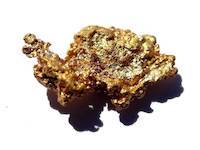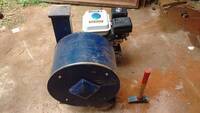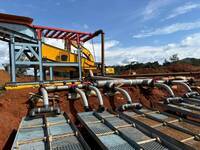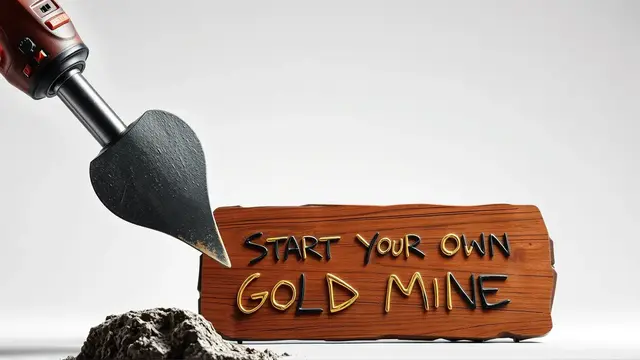- Strategic Provisioning of Equipment to Village Miners in Exchange for Gold Benefits
- Gold Acquisition Partnerships in Rural Mining Communities
- Gold Mining Shafts Provided in Return for Mining Outcome Percentage
- Equipment Provision Guidelines for Village Mining Operations
- Which Equipment Is Needed For Gold Supply Lines Exchange?
- Jackhammer types: Electric or pneumatic for shaft-sinking tasks
- Compressors to Power Jackhammers and Supply of Air to Shaft Miners
- Generators to Power Jackhammers, Lightning and Water Pumps
- Water Pumps for Removal of Water From Deep Mining Shafts
- Protective Equipment for Miners
- Sluices for Gold Recovery
- Gold Wash Plants For Serious Operations
- Hard Rock Crushers and Mills
- Mineral Processing Business with Gold Benefits
- Vanacy for Village Partnership Coordinator
- Contact Start Your Own Gold Mine
- Related pages
Strategic Provisioning of Equipment to Village Miners in Exchange for Gold Benefits
This web page talks about a way for dealers and buyers to work together that is good for both sides. The dealers or buyers give miners in villages the equipment they need for mining gold. This helps the miners mine gold more efficiently. In return, the dealers and buyers get some of the profits from the gold-bearing rocks, or they get a good percentage of any precious metals that are found. They also get priority when buying these valuable resources and get discounts on future transactions.
For more information contact us through website Start Your Own Gold Mine.
Gold Acquisition Partnerships in Rural Mining Communities
Establishing a gold buying and selling business in East Africa and other mining countries in Africa is a promising endeavor, given the rich mineral resources and the growing demand for precious metals. However, building a successful business in this industry requires more than just financial investment. It is crucial to establish strong relationships with local gold miners, as they are the first source of gold for gold buyers. By providing smaller equipment values to these miners, both parties can benefit. It is important to note that “providing” does not mean “giving” - rather, it involves working closely with miners and supervising the usage of equipment, while retaining the right to withdraw it at any time by agreement. This approach not only helps to build trust and appreciation among gold miners but also ensures the sustainable and responsible extraction of gold. In this article, we will explore the importance of local relationships and equipment provision in the gold mining industry and discuss best practices for building successful acquisition partnerships in rural mining communities.
Gold Mining Shafts Provided in Return for Mining Outcome Percentage
It is possible for individuals or entities to gain exposure to gold mining in East African countries by investing in mining lands and providing resources such as mining shafts to local village miners. This can be done through various arrangements, such as obtaining mining licenses, providing equipment and infrastructure, and entering into profit-sharing agreements with local miners.
In exchange for providing mining shafts and other resources, investors may be able to negotiate a percentage of the gold-bearing rocks or ore that is extracted from the land. This can provide a steady stream of gold to the investor, without the need for them to be directly involved in the day-to-day operations of the mining operation.
Additionally, investors may be able to negotiate discounts on the gold that is mined from their land, as well as priority access to purchase the gold. This can enable the investor to acquire gold at a lower cost and potentially sell it at a profit on the open market.
It is important to note, however, that investing in mining operations can be complex and involves various risks, such as regulatory issues, geological uncertainties, and potential conflicts with local communities. Therefore, it is recommended that potential investors conduct thorough due diligence and seek professional advice before making any investment decisions.
Equipment Provision Guidelines for Village Mining Operations
Following are t he equipment provision guidelines for village mining operations. To summarize, the rules are as follows:
Do not provide equipment for long-term partnerships, only for the duration of productive mining shafts or sites.
Only consider verified shafts that have shown evidence of gold, requiring skill from the company to do so.
Equipment should always be supervised by dedicated staff members of the gold buyer or investor.
Users, or village miners, are responsible for maintaining the equipment and returning it in functional condition, considering normal wear and tear acceptable.
Always know the their places of living and business and make legal agreements.
These guidelines can help ensure that equipment provision for village mining operations is done in a fair and responsible manner, maximizing the potential for successful gold mining while minimizing risks and potential conflicts.
Which Equipment Is Needed For Gold Supply Lines Exchange?
In the mining industry, the process of extracting and supplying gold requires specialized equipment and trained personnel. Equipment provision to miners, under proper supervision, can be a viable approach for securing priority access to the excavated gold or establishing a partnership with a percentage sharing of excavated gold-bearing rocks. This method can guarantee the quality and volume of the gold supply while empowering miners with the latest technology and support. Moreover, it can promote responsible mining practices and ensure compliance with safety regulations. Nevertheless, the type of equipment that is needed for this kind of gold supply lines exchange would depend on various factors, such as the mining location, the nature of the gold deposits, and the specific terms of the arrangement.
Jackhammer types: Electric or pneumatic for shaft-sinking tasks
Jackhammers are powerful tools used primarily to break through hard rock layers. They come into two main categories - electric jackhammers that require electricity as their power source; and pneumatics, which use compressed air.
Electric jackhammer: These devices feature a motor mounted on the front of the hammer head with an attached pneumatic hose for compressing air or hydraulic fluid to provide thrust when operating. They are typically used in smalle-scale operations where speed is not crucial but precision breaking through rock layers is necessary.
A pneumatic jackhammer is a specialized tool used in construction and demolition work to break up concrete, asphalt, or other hard surfaces into smaller pieces for easier removal. The pneumatic jackhammer is powered by compressed air and can be moved around easily on wheels or tracks, making it versatile in its application across various construction sites where surface removal needs to occur.
Both electric jackhammers and pneumatic ones provide significant advantages to investors and local villagers. For the miners:
- They enable faster progress during tunnel excavation, making mining operations more efficient.
For those interested in purchasing precious metals:
- It allows them access to higher-grade ore deposits or secure a better price for their gold purchases.
Overall, both options offer substantial benefits by facilitating quicker extraction of minerals and enhancing market opportunities.
Compressors to Power Jackhammers and Supply of Air to Shaft Miners
The use of pneumatic jackhammer technology is crucial in various industries including mining operations. The compressors utilized for powering these tools are essential not only because they provide the necessary air pressure but also as a life-saving measure, especially when dealing with dangerous environments such as deep mines and rock formations rich in gold deposits.
Mining Safety:
In areas with high risk factors such as gold mining shafts or deep mines:
They also ensure proper ventilation systems remain operational in the event of a fire hazard due to their ability to maintain air circulation even under extreme conditions like those found at mine sites.
Benefits for Gold Buyers:
Increased Efficiency: Jackhammers allow faster and more precise rock breaking, thereby increasing overall productivity on-site.
Cost Savings: By reducing labor time required from manual hammering techniques or using other less efficient tools that require significant manpower over extended periods of work in harsh conditions.
Strategic Impact:
For buyers interested in the market for gold-bearing rocks:
- The strategic advantage lies not only in acquiring materials at lower prices but also ensuring a steady supply chain through reliable mining operations.
The integration of compressors with pneumatic jackhammers represents a significant advancement that not only boosts productivity and safety but also opens new avenues for gold buyers by offering more competitive pricing or better access to high-quality materials.
Generators to Power Jackhammers, Lightning and Water Pumps
Generators are used to produce electricity in areas where there is no access to the power grid. In gold mining, electric jackhammers are used to break up rocks and generator power them. Generators also provide electricity for lighting and water pumps in the mines.
For gold buyers, providing generators to miners can be a beneficial strategy. Miners who receive generators may give the buyer the first opportunity to purchase any gold they find. This allows the buyer to get the gold at a lower price and before others have a chance to buy it. Furthermore, miners who receive generators may prioritize selling their gold to the provider of the generator. This strategy can help build a long-term relationship between the gold buyer and the miner, which can lead to a steady supply of gold at a discounted price.
Water Pumps for Removal of Water From Deep Mining Shafts
This refers to a program where gold traders and investors can provide water pumps to gold miners in exchange for gold, discounts, or priority of buying. This program is beneficial for gold traders and investors because:
It provides gold miners with a practical and valuable tool (water pump) that can be used in their mining operations, hence reducing costs and improving efficiency.
The option to pay with discounts or priority of buying may allow gold buyers to save money or gain early access to resources, leading to greater profits.
The exchange of gold for a tangible asset (water pump) also serves as a hedge against potential decreases in the value of gold, allowing them to protect their investments.
Protective Equipment for Miners
Protective equipment for miners are items that miners use to keep themselves safe while working. Here are some examples:
- Helmets: Miners wear helmets to protect their heads from falling rocks or other debris.
- Gloves: Miners wear gloves to protect their hands from sharp objects, chemicals, and other hazards.
- Respirators: Miners use respirators to protect themselves from breathing in dust, gas, or other harmful substances.
- Safety glasses or goggles: Miners wear safety glasses or goggles to protect their eyes from flying particles, dust, and other hazards.
- Steel-toed boots: Miners wear steel-toed boots to protect their feet from heavy objects and to prevent slips and falls.
- Harnesses and ropes: Miners use harnesses and ropes to secure themselves while working in high places or in unstable areas.
Using protective equipment can benefit village miners in several ways:
- It can prevent injuries and illnesses, which can keep miners healthy and productive.
- It can help miners comply with safety regulations, which can prevent fines and other penalties.
- It can improve morale and job satisfaction, as miners feel more valued and cared for by their employers.
- It can reduce workers' compensation costs, as fewer accidents and injuries mean lower insurance premiums.
Gold buyers can benefit from protective equipment for miners as well. When miners are safe and healthy, they can produce more gold and maintain a consistent supply. Additionally, responsible gold buyers may require their suppliers to use protective equipment as part of their due diligence and sustainability efforts. By promoting safe and responsible mining practices, gold buyers can enhance their reputation and build stronger relationships with their suppliers.
Sluices for Gold Recovery
A sluice is a piece of equipment that is used to separate gold from dirt and rocks. It is basically a long, sloped tray with riffles, which are rows of raised ridges, inside. When water and a mixture of dirt and rocks are poured into the sluice, the heavy gold particles settle in the riffles, while the lighter materials are washed away.
Sluices are very beneficial for village miners because they are relatively simple and inexpensive to build and operate. They can be made using materials that are readily available, such as wood and metal. Additionally, sluices can process a large volume of material, making them much more efficient than panning by hand.
Here is an example of how a sluice works:
- Village miners dig up dirt and rocks from a mining site.
- They bring the dirt and rocks to the sluice and mix them with water.
- They pour the mixture into the sluice and let it flow down the riffles.
- The gold particles settle in the riffles and are collected, while the dirt and rocks are washed away.
- The gold is then sold to gold buyers.
Sluices are a great tool for village miners because they allow them to process a large volume of material and efficiently recover the gold. This helps them to increase their productivity and profitability.
Gold Wash Plants For Serious Operations
Gold wash plants are equipment used for separating gold from soil, sand, and gravel using water and gravity. These plants are designed for serious gold mining operations and can process a large amount of material quickly.
Gold wash plants are beneficial for village miners because they allow them to process a large amount of material quickly and efficiently. This increases their gold recovery rate and reduces the amount of manual labor required. Additionally, gold wash plants can be used in remote locations, making it easier for village miners to access gold deposits.
Once the gold has been separated from the other materials, it is then sold with discounts to gold buyers. These buyers can be individual investors, refineries, or jewelry manufacturers. By selling the gold to these buyers, village miners are able to generate income for themselves and their communities.
Hard Rock Crushers and Mills
Jaw crushers and rock impact mills are machines used to crush large rocks into smaller pieces, making it easier to extract valuable minerals like gold.
A jaw crusher works by using two metal plates, one stationary and one movable, to crush rocks as they are fed into the machine. The rocks get squeezed between the plates, and as they get smaller, they fall out of the bottom of the machine.
A rock impact mill, also called a hammer mill, uses a series of spinning hammers to crush rocks into smaller pieces. The rocks are fed into a chamber where the hammers rotate at high speeds and smash the rocks, making them smaller.
For village miners, these machines can be very beneficial. They can help to process large amounts of ore quickly and efficiently, and they can extract more gold from the ore than manual methods. This means that the miners can sell more gold to gold buyers, increasing their income. Additionally, these machines can also help to reduce the amount of time and effort needed to manually crush rocks, which can be back-breaking work.
For example, a village miner can use a jaw crusher to crush large rocks into smaller pieces, then use a rock impact mill to further grind the rocks into a fine powder. This powder can then be passed through a classifier to separate the gold from the other minerals. The gold can then be sold with priority and good discounts to a gold buyer.
In summary, jaw crushers and rock impact mills are machines that can help village miners to extract gold more efficiently and effectively from ore, increasing their income and reducing the time and effort needed for manual crushing of rocks.
Mineral Processing Business with Gold Benefits
Mineral processing for gold involves extracting and concentrating gold from raw ore. This is done through various methods, such as crushing, grinding, and chemical separation. By establishing a mineral processing business, gold buyers and investors can benefit in several ways.
Firstly, they can ensure a consistent and reliable supply of gold by processing raw ore from local mines. This can help to mitigate the risks associated with relying on independent gold miners and the volatility of the gold market.
Secondly, a mineral processing business can add value to the raw ore by increasing its gold content through concentration. This means that gold buyers and investors can purchase the raw ore at a lower price and sell the concentrated gold at a higher price, resulting in higher profit margins.
Furthermore, by establishing a mineral processing business, gold buyers and investors can build relationships with local gold miners. This can provide them with access to exclusive supply agreements and priority access to high-quality gold ore.
Overall, a mineral processing business can provide gold buyers and investors with a stable and profitable supply chain, while also contributing to the local economy by providing employment and supporting the development of the mining industry.
Vanacy for Village Partnership Coordinator
A Village Partnership Coordinator facilitates strategic extraction processes through coordinated management and operational oversight of asset utilization in mining environments; this includes optimizing resource allocation efficiency while maximizing output yield potentiality via integrated systems solutions integration across multiple stages—initially raw ore treatment to final product refinement. Such roles are instrumental for ensuring that supply chains remain robust, sustainable practices adhere throughout the lifecycle from extraction processing through end-use consumer engagement.
Village Partnership Coordinator: A Village Partnership Coordinator facilitates strategic resource allocation and operational efficiency in mining environments; this includes optimizing asset utilization across multiple stages—initially raw ore treatment to final product refinement. Such roles are instrumental for ensuring that supply chains remain robust, sustainable practices adhere throughout the lifecycle from extraction processing through end-use consumer engagement.
In summary, a Village Partnership Coordinator plays an essential role within rural gold mining communities by strategically managing equipment resources and facilitating efficient operations—ensuring consistent high-quality output while supporting local economies. This position exemplifies commitment to fostering strong community bonds underpinned by sustainable practices in the industry’s supply chain network.
Contact Start Your Own Gold Mine
Contact us today to learn more about our services and how we can help you establish successful gold acquisition partnerships in rural mining communities.
Related pages
- Establishment of gold trading in East Africa, Tanzania, Uganda, Kenya, Rwanda...
 Unleash the boundless opportunities of the East African gold market with our all-inclusive service designed for ambitious gold traders. Engage in personalized face-to-face interactions, establish full equity ownership over gold trading transactions, benefit from meticulous strategic planning, forge direct connections with local miners, and access state-of-the-art equipment for streamlined and efficient gold transactions. Capture the essence of the East African gold trade in countries like Uganda, Tanzania, and Kenya, and embark on a transformative journey that unlocks the unparalleled potential of this vibrant and dynamic market.
Unleash the boundless opportunities of the East African gold market with our all-inclusive service designed for ambitious gold traders. Engage in personalized face-to-face interactions, establish full equity ownership over gold trading transactions, benefit from meticulous strategic planning, forge direct connections with local miners, and access state-of-the-art equipment for streamlined and efficient gold transactions. Capture the essence of the East African gold trade in countries like Uganda, Tanzania, and Kenya, and embark on a transformative journey that unlocks the unparalleled potential of this vibrant and dynamic market. - SYOGM Rock Impact Mill
 SYOGM Rock Impact Mill refers to low-cost, highly efficient, crushing and grinding impact mill with capacity of 500 kg and even up to 900 kg per hour. Capacity depends of the operator's skills and speed of work. This type of rock impact mill can easily replace rudimentary and very expensive ball mills such as those used in East Africa, in Tanzania, Uganda or Kenya or neighboring countries. While local village miners need to dry their rocks, this rock impact mill will work with water and without drying. It may process dry rocks as well. The machine may be transported by 2 people from a car to operating site. Or it may be transported by one person and wheelbarrow. Thus it is very mobile. Recovery screen is 1 mm and may be adjusted. We know from practical testing and scientific journal that screen of 1.5 mm is good enough to achieve almost optimum recovery. Thus our screen of 1 mm is more than enough to provide optimum recovery for small scale miners in East Africa and in other countries. This is pass-through grinding machine. It means that it may be used for very quick gold discovery and field sampling.
SYOGM Rock Impact Mill refers to low-cost, highly efficient, crushing and grinding impact mill with capacity of 500 kg and even up to 900 kg per hour. Capacity depends of the operator's skills and speed of work. This type of rock impact mill can easily replace rudimentary and very expensive ball mills such as those used in East Africa, in Tanzania, Uganda or Kenya or neighboring countries. While local village miners need to dry their rocks, this rock impact mill will work with water and without drying. It may process dry rocks as well. The machine may be transported by 2 people from a car to operating site. Or it may be transported by one person and wheelbarrow. Thus it is very mobile. Recovery screen is 1 mm and may be adjusted. We know from practical testing and scientific journal that screen of 1.5 mm is good enough to achieve almost optimum recovery. Thus our screen of 1 mm is more than enough to provide optimum recovery for small scale miners in East Africa and in other countries. This is pass-through grinding machine. It means that it may be used for very quick gold discovery and field sampling. - Mine-to-Market Gold Club Membership
 Experience the exceptional Mine-to-Market Gold Club Membership in Uganda, where you can engage with a vibrant community of miners, explore numerous mining shafts, and access top-notch mineral processing workshops, offering a direct gateway to procure the finest Ugandan gold.
Experience the exceptional Mine-to-Market Gold Club Membership in Uganda, where you can engage with a vibrant community of miners, explore numerous mining shafts, and access top-notch mineral processing workshops, offering a direct gateway to procure the finest Ugandan gold. - SYOGM Advance Gold Wash Plant Design
 The SYOGM (Start Your Own Gold Mine) Advance Wash Plant is an innovative gold recovery system that allows miners to efficiently and effectively extract gold particles from dirt. The wash plant design incorporates various components and processes to ensure optimal extraction and recovery of gold.
The SYOGM (Start Your Own Gold Mine) Advance Wash Plant is an innovative gold recovery system that allows miners to efficiently and effectively extract gold particles from dirt. The wash plant design incorporates various components and processes to ensure optimal extraction and recovery of gold. - The Gold Trade in East Africa: Understanding the Market and Approach
 The gold trade in East Africa is booming, with ample opportunities for business deals. However, foreign traders often struggle to navigate the market due to differences in mentality and approach. In this article, we will explore the key factors that gold traders need to understand in order to succeed in this region.
The gold trade in East Africa is booming, with ample opportunities for business deals. However, foreign traders often struggle to navigate the market due to differences in mentality and approach. In this article, we will explore the key factors that gold traders need to understand in order to succeed in this region. - Due Diligence With International Gold Deals
 Navigating international gold deals, particularly those involving partners from Africa and Asia, requires meticulous due diligence to mitigate the risk of fraudulent transactions. Our comprehensive checklist for due diligence with international gold deals ensures that every aspect of the transaction is thoroughly vetted. This includes verifying the legitimacy and reputation of suppliers, assessing the authenticity and purity of the gold, ensuring compliance with international trade regulations and local laws, and conducting financial background checks to prevent money laundering and other illicit activities. Additionally, we evaluate logistical factors such as secure transportation and reliable delivery mechanisms. By systematically addressing these critical indicators, we help safeguard your investments, promote transparency, and establish trustworthy business relationships. Trust our expertise to guide you through the complexities of international gold transactions, ensuring secure and successful outcomes for your business endeavors.
Navigating international gold deals, particularly those involving partners from Africa and Asia, requires meticulous due diligence to mitigate the risk of fraudulent transactions. Our comprehensive checklist for due diligence with international gold deals ensures that every aspect of the transaction is thoroughly vetted. This includes verifying the legitimacy and reputation of suppliers, assessing the authenticity and purity of the gold, ensuring compliance with international trade regulations and local laws, and conducting financial background checks to prevent money laundering and other illicit activities. Additionally, we evaluate logistical factors such as secure transportation and reliable delivery mechanisms. By systematically addressing these critical indicators, we help safeguard your investments, promote transparency, and establish trustworthy business relationships. Trust our expertise to guide you through the complexities of international gold transactions, ensuring secure and successful outcomes for your business endeavors.

